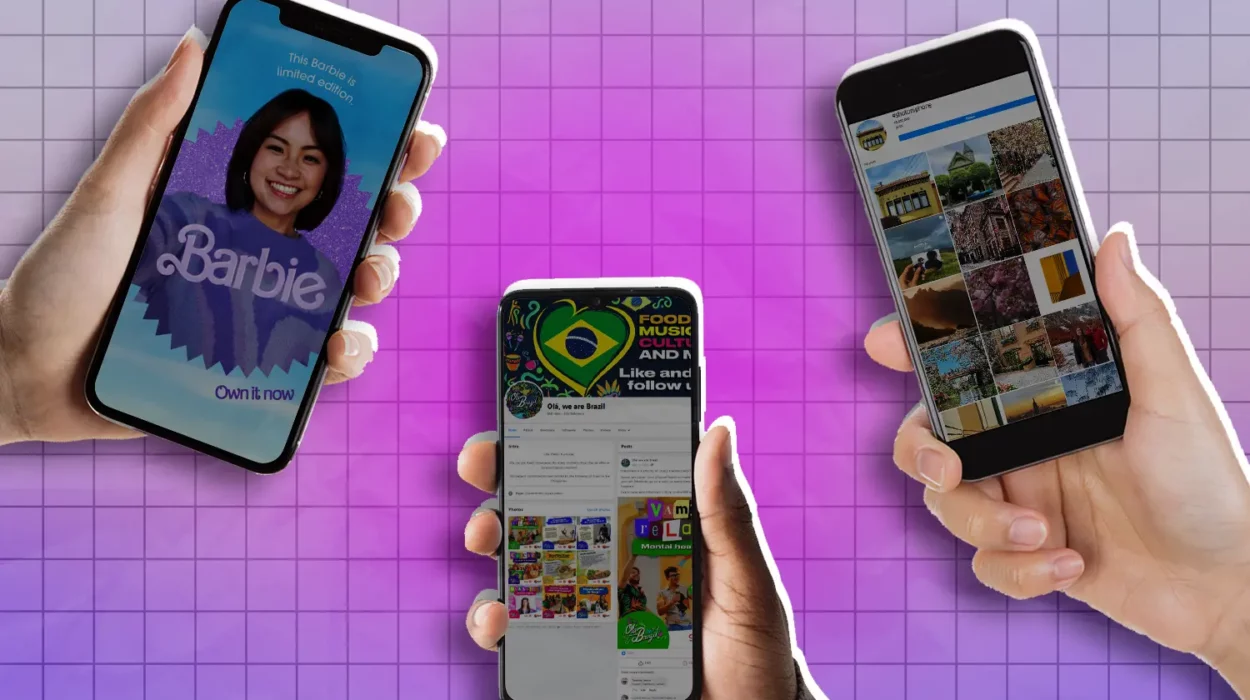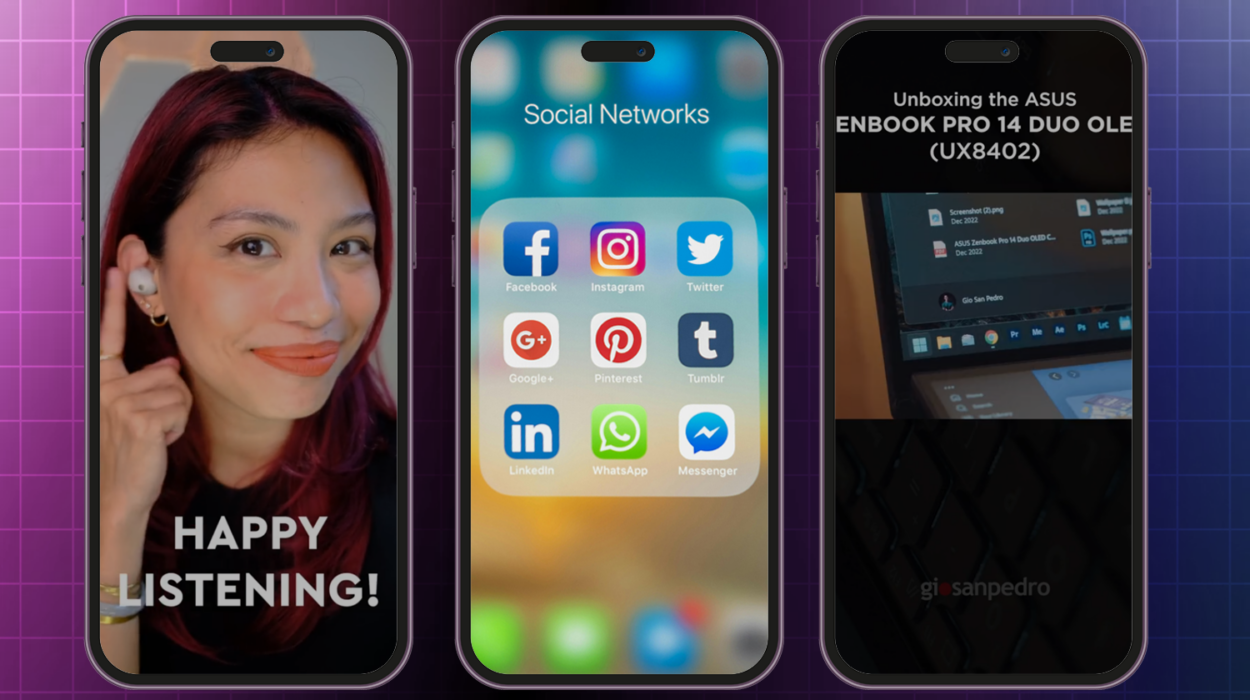A 2023 study by video animation company MotionCue found that watching videos kept brands top of mind for 79% of consumers. This puts video at the forefront of online marketing.
In Q1 of 2023, 71% of video content was made for social media marketing alone. Companies used a variety of formats: GIFs, Instagram Reels, Instagram Stories, TikTok videos, Facebook Stories, YouTube videos, and many more.
Whether you aim to spread awareness, feature a product, or create a visual experience, video marketing can help you build and sustain your brand presence and engage with your audience.
Read on to find out how you can boost your digital marketing strategy with video content.
1. Get to Know Your Audience
Your approach to your video marketing campaign will depend on how well you understand your audience. Your strategy shouldn’t just revolve around your brand; your target market’s needs, values, and challenges are just as important. Thus, this initial market research is a critical part of the video planning stage. And remember, always meet your audience halfway.
Below, we listed three tools to help you get a better understanding of your audience, from the video formats they like to watch to how they typically behave online.
Sprout Social
Sprout Social is a social media management platform that offers several tools to help you get a bird’s-eye view of your social media marketing campaign. Here are two tools you’d want to check out.
The first is Sprout’s Analytics, which allows you to see the bigger picture. Using this tool makes it easy to review your brand presence across all your active social media channels without having to switch tabs or windows. It also provides competitor data to give you a quick glance at how your campaign is faring against the competition. Through analytics and performance summaries, Sprout’s Analytics enables you to gain a comprehensive and insightful view of your campaign to enhance paid and organic traffic and make better plans for your future video marketing efforts.
Another is Sprout’s Listening tool, which gives you access to conversations surrounding your brand. This tool lets you tap into valuable, unfiltered online information, whether it’s about your brand, your competitors, or your industry. It also helps you identify social media influencers, key opinion leaders, and other media personalities who interact with your brand. Lastly, Sprout’s Listening tool allows you to see your share of voice, enabling you to distinguish your brand from the competition and identify opportunities where you can make your business stand out.
Media Meter
Media Meter is a media monitoring company that covers real-time stories across traditional and online platforms. Media Meter offers different tools that can help you strategically plan your video campaign based on how different media channels respond to your brand presence.
One such tool is MediaWatch, which enables you to monitor television, radio, blogs, news websites, newspapers, and magazines for mentions of your brand. Stories, where your brand appears, are sorted based on several metrics, including Story Value, Ad Value Equivalency, Publication Score, and Author Score. MediaWatch also records how different media channels respond to your brand, whether positively or negatively. With these capabilities, you can identify what worked and what didn’t in your video marketing campaigns.
Media Meter’s SharedView allows you to keep track of your online presence by monitoring different social media platforms such as Facebook, Twitter, Instagram, and YouTube. It also presents your social mentions based on several metrics, including Story Value, Top Influencers, Top Mentioned Entities, Most Engaging Posts, and Most Dominant Posts per Platform. With 58.4% of the world’s population using social media, SharedView can serve as a valuable asset to your video marketing strategies.
Google Analytics
Google Analytics is a web service that provides a straightforward analysis of your website. The tool lets you draw valuable insights about your website traffic, such as the number of users currently checking out your business, where they access it, and how long they stay. The service can help you better understand the needs of your audience, so you can develop the right content. It can also give you access to Google’s insights and machine learning capabilities to help you improve your content marketing efforts. Additionally, Google Analytics works in partnership with Google Advertising, which allows you to turn your insights into action so you can proactively reach out to your audience.
2. Choosing Your Video Type
Now that you’re more familiar with your market, it’s time to select the type of video content that works best for your marketing strategy.
Video marketing can get your brand message across in several ways. Here are four types of videos you can choose from to communicate your brand story, offerings, or advocacy.
Brand Videos
A brand video is a content strategy that promotes your brand’s identity. Its main objective is to showcase aspects of your business that can encompass your brand, whether it’s the people, your services and products, or the company’s history. You can include customer testimonial videos, a behind-the-scenes look, and company culture in your digital marketing campaigns. You can also upload these videos to the landing page of your chosen platform to show transparency or communicate the trustworthiness of your brand. By incorporating this type of video into your content strategy, you can leverage the positive image of your corporate identity to support the messaging of your marketing campaigns.
In these marketing videos, it is crucial to present a cohesive brand identity that ties back to your audience. If your audience is hip, fun, and easygoing, these qualities must be reflected in your social media marketing. Aligning the visuals of your video marketing with your audience persona will make your content more relatable and draw more interest and empathy toward your brand.
To create and edit these brand videos effectively, you may want to consider using free online video editor tools. Such a tool can help you polish your content, add special effects, and ensure your brand message comes across clearly. They offer a cost-effective way to enhance the quality of your marketing videos, making them more engaging and appealing to your target audience.
Check out UNICEF’s video to see how they introduced their new branding in this marketing campaign.
Educational and Explainer Videos
Educational videos are used to introduce new offerings or even your company’s new branding. This video style is perfect for those at the top of the marketing funnel to raise awareness and reach new audiences unfamiliar with your brand. It can also come in different formats: animated videos, screen recordings, talking heads, customer testimonials, or vlogs. For educational videos to be successful, they should present not only information but also a brand personality that your audience can relate to. The more you show familiarity with your target audience, the more effective your video marketing efforts can be.
One thing to take note of is that these videos are intended for audiences who are unaware of your brand. Using industry jargon, technical terms, and complex ideas will only make your video counterproductive and ineffective.
Dollar Shave Club’s explainer video is a great example of video marketing that combines information and brand personality.
Demo Videos
As the name implies, demo videos aim to demonstrate how your products or services work. This video format is perfect for those at the bottom of the marketing funnel by providing your audience with a step-by-step process to help them understand your services or properly utilize your products. It can also come in multiple forms, similar to brand videos. Whatever form your product videos may take, it’s important to use layman’s language for them to be effective.
It’s also important to remember that the audience is already familiar with your brand and may have an idea of how your offerings can help address their needs. For your demo to be effective, it is best to highlight your product’s selling points and avoid technicalities.
Take a look at AirTable’s demo reel. While the reel involved multiple product videos, they were able to simplify their message by focusing on specific features per video.
Event Videos
This video content strategy documents how live events transpire. It involves a collection of live footage showing what the event is all about, who the attendees are, and why the event matters. Customers who weren’t able to attend can catch up on how the event unfolded through this video strategy. You can also use event videos to promote new products and services, as well as upcoming events.
This video type works best by carefully weaving event highlights into your brand identity. Excessive use of live event footage without any correlation to your brand can lead to incoherent video marketing. Important social media influencers, key opinion leaders, brand ambassadors, and newly launched products at the event can be highlighted to allow your brand to come to the fore in your event videos. Additionally, you can publish this type of video content as a live video, depending on your publishing platform and your marketing strategy.
Watch how Shopwise used actual video footage from the store to showcase its new brand identity.
3. Identifying Which Online Platform to Publish
After choosing which video type to go with, it’s time to decide where to publish. Social media platforms are currently the best avenue to publish video content. However, each platform has its own set of users. Identifying which one to use based on what your target audience consumes is key to effective video marketing.
Here are the top four video platforms and their respective user profiles:
| Social Media Platform | Average Active Monthly Users | Largest Age Group | Audience Gender | Average Time Spent per Day |
| 2.9 billion | 25-34 (29.9%) | 44% female, 56% male | 30 minutes | |
| YouTube | 2.1 billion | 15-35 (77%) | 51.4% female, 48.6% male | 45.6 minutes |
| 2.0 billion (self-reported), 1.4 billion (other sources) | 18-24 (31.8%) | 48.2% female, 51.8% male | 30.1 minutes | |
| TikTok | 834.3 million | 18-24 (21%) | 54% female, 46% male | 45.8 minutes |
4. Tailoring Video Content to Match Chosen Platform
Once you have identified the best social media channels for your video content, you can now tailor your videos to the specifics of your chosen platforms. By considering the nuances of each channel, you can properly optimize your existing videos to increase viewership.
Social Media Platform | Medium | Aspect Ratio | Resolution | Ideal Total Running Time | Ideal Type of Video | |||
| Brand Videos | Explainer Videos | Demo Videos | Event Videos | |||||
| Facebook Feed Video | 1:1 4:5 | At least 1080p x 1080p | 1 minute | ✔ | ✔ | ✔ | ✔ | |
| Facebook Stories | 9:16 | At least 1080p x 1080p | 15 seconds | ✔ | ✔ | |||
| Facebook Live | 16:9 | 1920p x 1080p | 8 hours max | ✔ | ||||
| YouTube | YouTube Video | 16:9 | 1920p x 1080p | 7 to 15 minutes | ✔ | ✔ | ✔ | ✔ |
| YouTube Shorts | 9:16 | 1080p x 1920p | 15 to 60 seconds | ✔ | ✔ | |||
| YouTube Live | 16:9 | 1920p x 1080p | 30 minutes | ✔ | ||||
| Instagram Reels | 9:16 | At least 500p x 888p | 15 to 90 seconds | ✔ | ✔ | ✔ | ✔ | |
| Instagram Stories | 9:16 | At least 1080p x 1080p | 15 seconds | ✔ | ✔ | |||
| Instagram Live | 9:16 | 1080p x 1920p | 4 hours max | ✔ | ||||
| TikTok | TikTok Video | 9:16 | 1080p x 1920p | 21 to 34 seconds | ✔ | ✔ | ✔ | ✔ |
| TikTok Live | 9:16 | 1080p x 1920p | 30 minutes | ✔ | ||||
5. Video Production Techniques You Need to Remember
Before ending this blog, we would like to impart these video storytelling techniques you can use to create quality videos. Our video production and marketing teams at M2.0 Communications use these techniques on each of our project.
Remember Your Target Audience
Your video marketing strategy must not only center around your branding but also around your target audience. Identify the awareness level of your audience, their position in the marketing funnel, and the type of video content that suits their needs.
This video from the Bureau of Treasury Philippines showcases how well they understand their target market.
Show, Don’t Tell
Video is a visual medium; use different visual techniques to improve video quality. Use illustrations, motion graphics, animated videos, b-rolls, customer testimonial videos, or even stock footage. Your audience is able to recall your marketing videos better when you use striking and compelling visuals.
Take a look at the WWF Philippines video for Earth Hour 2023.
Back-Up Your Narrative with Facts and Data
Data is the backbone of your video content. With data, you can create a cohesive story arc presenting your brand as a trusted partner. Most video marketers focus on the visuals of their marketing strategy, neglecting the power that data holds. Include essential data in your script to support your video marketing strategy.
In video marketing, you can present your data in various forms, such as graphs, illustrations, animated videos, or customer testimonial videos. In the age of information, data can give you an edge to stand out in your industry.
See how the World Bank effectively presented its disaster risk and management projects in this Corporate Social Responsibility video.
Use Heroes to Portray Your Brand’s Voice
Being relatable is important in video content. You can create a compelling story by understanding your audience and the challenges they face so that whatever solution you offer resonates with their needs. Through this process, you will be able to directly and effectively connect with your target audience.
Take a look at how Grammarly used a hero to represent their target market.
Use Color Theory
Include color theory in your video creation process. Color theory is among the many helpful video storytelling techniques to improve your video marketing strategies. It also allows you to leverage the symbolic meaning of colors, how they interact with one another, and the different ways your audience can perceive them. Explore and experiment with the various ways you can use colors in your videos to create cohesive storytelling. Do not let your branding colors limit your creativity.
Watch how Coca-Cola used color theory in making this video.
End With a Call to Action
Before ending your video, it’s important to give your audience a clear direction. A call to action serves as an instruction to your viewers on what to do after watching your video. Your call to action can be an announcement, a website link, or the steps to purchasing the product or service mentioned in your video. In addition, your call to action can be used to redirect your audience to your website’s landing page or your YouTube channel, thus increasing your traffic. This ensures that you effectively communicate the intent of your entire video.
Take a look at how Monday.com concluded its video with a simple yet effective call to action.
What’s Next?
It’s apparent that online video content has emerged as a key social media marketing technique that drives engagement and brand awareness. However, producing high-quality video content that makes your brand stand out is becoming increasingly difficult. In making your videos, remember to always think of your audience. They are the ones who will watch your content, so make sure that your videos are able to capture their interests and speak to their needs. Ultimately, concrete and compelling video storytelling will make your brand memorable.
M2.0 Communications is a PR and communications agency that helps brands creatively tell their stories. We offer digital marketing services including social media marketing, influencer management, content development, and video production. Visit our case studies page to learn more about our work.


